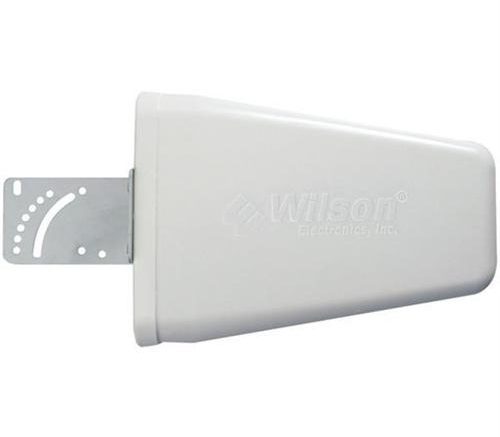There is a virtually never-ending supply of obscure terms when you’re working with antennas and radio frequencies! Today we’re talking about “donor antennas,” which is a term you’ll hear in commercial cellular booster designs. Before I explain the concept of the “donor antenna,” let’s talk about what a commercial cellular booster is and how it differs from other forms of cellular signal boosters.
Let’s start with the big picture: DAS
DAS stands for “Distributed Antenna System” and it’s the term that experts use for commercial cellular signal booster systems. Put simply, a DAS takes the signal from one or more outdoor antennas and redistributes it throughout a building using multiple indoor antennas. It’s more than just a consumer booster. It’s a complex system.
Commercial DAS’s start with the outdoor antennas. Outdoor antennas are critical. The whole reason you put in a DAS is that you can’t get good signal indoors, so it’s important that the outdoor antennas are in place. They take the strongest possible signal — the outdoor signal, as free as possible from obstructions like trees and buildings — and bring it into the amplifier so it can be sent out all over the inside of the building.
The donor antenna
“Donor antenna” is just another term for “outdoor antenna.” It comes from the idea that it’s the connection point between the DAS and the cell site. The donor antenna receives signals from the cell site and “donates” them to the amplifier. It also receives signals from the amplifier and sends them back to the cell site.
Can you have multiple donor antennas?
Absolutely. The really fancy installations use a specific antenna for each one of the different sets of cellular frequencies, and sometimes have special setups so that one antenna points at a cell site for AT&T, one for Verizon, etc. Special filters can help get the best possible signal when only one service has a nearby tower.
Are donor antennas used in home cell phone signal boosters?
Yes, they are. A cell phone booster system for home includes all the parts you need for a typical installation. This includes both the donor (outdoor) and server (indoor) antennas. Most folks don’t go to the trouble of choosing a different donor antenna for a home system because the one it comes with is generally just perfect.
Is there such a thing as an “indoor” donor antenna?
A few of the major cell booster makers made products with indoor donor antennas about a decade ago. These were designed for people in apartments who couldn’t drill holes in a wall for the outdoor antenna.
The problem with having your donor antenna indoors is that the amplifier in the cell booster needs to be dialed way down. Otherwise you get feedback between donor and server antennas and the whole system stops working. There’s a better solution if you can’t drill through the wall. Just use a window entry cable. It fits in the slender crack between a window or door and its frame, letting you close the window or door and still letting you get signal through.
Your source for cellular antennas
There’s only one place to get the best cellular antennas, and that’s SolidSignal.com. You’ll find the best selection here, and not just simple antennas like the one at the top of this article. I’m talking about every single combination of frequency and size you’ll need to build a truly commercial system. If you’re the sort of person who can do this sort of thing yourself, choose from our wide online selection. If you need an expert to design and install the system for you, call the experts at 888-233-7563 and you’ll be taking your first step toward guaranteeing fabulous cell service throughout your building no matter how large or how small it is.





